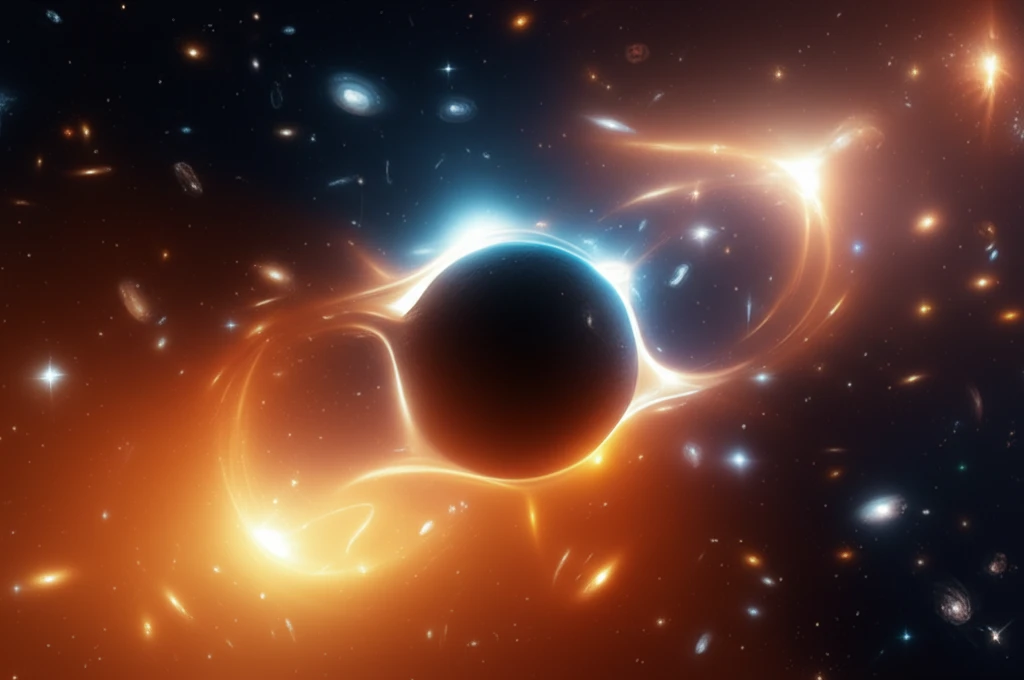
Unlocking the Universe's Secrets: How Cosmic Infrared Background Helps Map Dark Matter
"Delving into the innovative use of cosmic infrared background (CIB) to illuminate the universe's hidden structures."
Imagine the universe as a vast, intricate tapestry woven with stars, galaxies, and unseen structures. For decades, scientists have been developing methods to map the distribution of matter, including the elusive dark matter that makes up a significant portion of the cosmos. Gravitational lensing, the bending of light by massive objects, has emerged as a powerful tool in this endeavor. By observing how light from distant sources is distorted, researchers can infer the presence and distribution of intervening mass, offering insights into the universe's underlying framework.
Traditionally, gravitational lensing studies have focused on two primary sources: the cosmic microwave background (CMB) and individual galaxies. The CMB, the afterglow of the Big Bang, provides a pristine canvas for mapping the large-scale structure of the universe. Galaxy surveys, on the other hand, allow scientists to probe the distribution of matter on smaller scales by analyzing the shapes and orientations of distant galaxies. Now, a new player has entered the field: the cosmic infrared background (CIB).
The CIB, a diffuse glow of infrared light emitted by countless dusty star-forming galaxies, offers a unique perspective on the universe's structure. Unlike the CMB, which originates from a single epoch in cosmic history, the CIB is sourced by galaxies spanning a wide range of redshifts, or distances. This makes it an ideal probe of the universe's structure at intermediate redshifts, bridging the gap between galaxy surveys and CMB lensing studies.
CIB Lensing: A New Window on the Cosmos

Recent research has demonstrated the potential of using the CIB as a source for gravitational lensing studies. By analyzing the distortions in CIB maps, scientists can reconstruct the distribution of matter along the line of sight, providing valuable information on the amplitude of structure at intermediate redshifts. This approach complements existing lensing techniques and offers new insights into the formation and evolution of galaxies and the overall structure of the universe.
- Bridging the Gap: CIB lensing probes intermediate redshifts between galaxy surveys and CMB lensing.
- Star-Formation History: Constrains CIB halo models and informs about the universe's star-formation.
- Structure Amplitude: Provides constraints on the amplitude of structure at different cosmic times.
The Future of CIB Lensing
As data from current and future experiments become available, CIB lensing promises to become an increasingly powerful tool for unraveling the mysteries of the universe. By combining CIB lensing with other cosmological probes, scientists will be able to create a more complete and accurate picture of the universe's structure, evolution, and composition. The journey into the depths of the cosmos continues, guided by the faint but informative glow of the cosmic infrared background.
